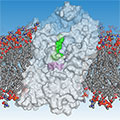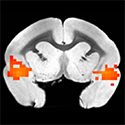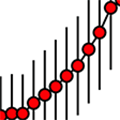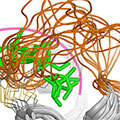Featured Paper of the Month – September 2020
Published in Nature Communications by Plenge, Per; Abramyan, Ara M; Sørensen, Gunnar; Mørk, Arne; Weikop, Pia; Gether, Ulrik; Bang-Andersen, Benny; Shi, Lei; Loland, Claus J
The serotonin transporter (SERT) terminates serotonin signaling by rapid presynaptic reuptake. SERT activity is modulated by antidepressants, e.g., S-citalopram and imipramine, to alleviate symptoms of depression and anxiety. SERT crystal structures reveal two S-citalopram binding pockets in the central binding (S1) site and the extracellular vestibule (S2 site). In this study, our combined in vitro and in silico analysis indicates that the bound S-citalopram or imipramine in S1 is allosterically coupled to the ligand binding to S2 through altering protein conformations…










